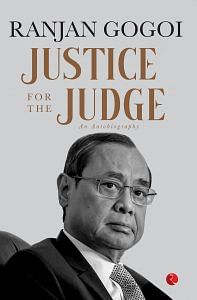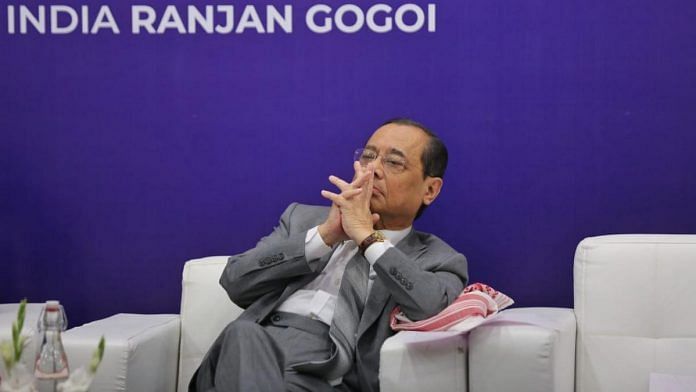Most of the NRC applicants were young people who had to establish their NRC eligibility based on the names of their ancestors; the link was required to be proved by way of documentary evidence. Declaration of descent from an ancestor was checked by consistency in statements about siblings from each applicant. This is the Family Tree Verification system. The SCNR informed the Bench that it had been found that it was quite easy to procure documents to prove lineage as most of the issuing authorities did not undertake any verification of the authenticity of the claimed parent-child relationship. A number of persons providing valid Electoral Photo Identity Cards (EPICs) or PAN cards, however, could not make it to the final NRC as they had used somebody else’s legacy.
The basic principle of Family Tree hearings is that descendants need to recognize one another to be genuine unless there are justified grounds for non-recognition. Recognition is established through mentioning of names in their family tree statements, called Manual Family Tree (MFTs) and matching of the MFTs. Each applicant had to declare his MFT beforehand. This was filled in after completion of the application form submission on 31 August 2015, as part of field verification. The MFT form was designed to list the details of different generations of the family, comprising the names of the legacy person(s), his/her spouse and the children and grandchildren of the legacy person. Such forms were submitted by all the NRC applicants and, therefore, the NRC authorities had knowledge of the family trees of all applicants. These were then scanned and made into a centralized database. Thereafter, once the digitization of the application forms was completed, another database was created based on the legacies claimed. A comparison of the two databases permitted identification of likely cases of false links claimed and such cases were further investigated.
As an illustration, let’s take a hypothetical case where I am the only child of my father and have used his legacy (residence in India before 1971) for getting my name included in the NRC. However, there is another mischievous impostor who doesn’t have a proper legacy before 1971 but he also shows my father as his father while applying for the NRC. Now, after comparison of the two databases, NRC authorities will get to know that I have not declared this impostor as my brother. To ascertain the truth, NRC authorities will call both of us for a hearing and we will be asked to explain the mismatch. As a law-abiding person, I will refuse to recognize the impostor and he will be identified. However, there is a possibility that I am also a mischievous person and for a consideration had sold my legacy and so will attempt to accept the impostor as my brother in front of the NRC authorities. However, at this stage, it would not be possible for me to do this as I have already declared in my MFT earlier that I do not have any sibling.
Also read: ‘Was a mistake’: Ex-CJI Gogoi on being on bench hearing sexual harassment case against him
The naysayers and detractors of the NRC used this to claim that legacies had been traded but little did they know that the system itself provided for identifying such trade. Usually, the number of descendants was many; even if an impostor could successfully bargain with one or two of the descendants, such bargaining with all the other descendants was not reasonably possible. Before the development of this system, nobody even knew whether his/her legacy was already being misused by some other impostor. During the implementation of this verification system, lakhs of mismatches were found and only after satisfactory explanation was the applicant included. In the absence thereof, the applicant was kept out of the NRC. Satisfactory explanation included cases of nicknames and genuine absence of knowledge of official names of nieces/nephews. Some cases of mismatch also happened due to name changes after marriage and existence of more than one spouse who was unknown, among others. All the above details were very elaborately laid before the Court by the SCNR in the 59 reports (including the sealed cover reports) submitted from time to time.
Timelines were set by the Court, which were revised from time to time. These timelines were necessitated, however unjustified they may appear to be, due to the fact that slowly but surely the Bench was convinced that neither the Union nor the state government wanted the NRC exercise completed. One day, a very senior serving bureaucrat of the Government of India came to meet me at my residence (10, Tees January Marg). To my utter shock, he indicated that I go slow on the NRC matter. I told him with all the politeness at my command that I did not like interference in my judicial work.
So far as the state authorities were concerned, once it was realized that the NRC exercise was likely to succeed all kinds of obstructions were sought to be created in the functioning of the SCNR, details of which are on record at the Supreme Court, mainly in the sealed cover reports. This is the reason the Court was constrained to pass orders for reports to be submitted in sealed covers. Even though all such attempts at obstructing the NRC updation exercise were quashed with an iron fist by the Supreme Court, it was but natural for politicians to harvest the most out of whatever happened next.
Political functionaries, both of the Congress and the BJP, during the currency of the NRC updation, tried to extract their own political mileage, though they ostensibly had diametrically opposing ideologies. Around mid-2015, when the NRC updation process had progressed significantly and NRC application forms were being submitted by applicants, CM Tarun Gogoi, already rattled by the imminence of the NRC, was confronted with an IA filed in the Supreme Court by his most significant political rival, Himanta Biswa Sarma. He sought certain reliefs for the original inhabitants of the state and for the Indian citizens who had come to Assam post-1971. Not to be outdone, soon we had the chief secretary of the state filing an affidavit to the effect that the NRC updation was the most important exercise ever for the state and pleading that the NRC be prepared based on the 2014 electoral rolls. Political expediency had plumbed newer depths.
Also read: ‘If you go to court, you won’t get a verdict’ — Gogoi says 15 months after retiring as CJI
A year later, when Sarbananda Sonowal came to power, he also sought to derive mileage on his part by swearing that the NRC updation was his top-most priority and sought to demonstrate it by making the state NRC office the first office visited by him after taking oath as the CM. Even before publication of the draft list, the date for which was set as 31 December 2017, as late as November, law officers of the Union warned of the possibility of violence if the draft NRC was published. They also argued on behalf of the Government of India that the Supreme Court had encroached upon the domain of the executive and that the Court had transgressed the constitutional boundaries by ordering publication of the draft NRC on 31 December 2017.
A year and a half later, in March 2019, another argument was put forward by the Union government that due to parliamentary elections in the country, around 165 companies of paramilitary forces deployed specifically for the NRC exercise were required to be withdrawn and, therefore, the final NRC publication should be deferred. The Court had to threaten ordering personal appearance of the Union home secretary and it was only thereafter that things fell in line. By an order dated 13 August 2019, the Court turned down the request of both the Union and state governments for reverification. This was done since the process of verification at multiple layers, inherent in the verification module designed, obviated the necessity for any further verification or reverification. Strangely, the issue of reverification has been kept alive, at least in the public domain.
 This excerpt from ‘Justice for the Judge: An Autobiography’ by Ranjan Gogoi has been published with permission from Rupa Publications.
This excerpt from ‘Justice for the Judge: An Autobiography’ by Ranjan Gogoi has been published with permission from Rupa Publications.



